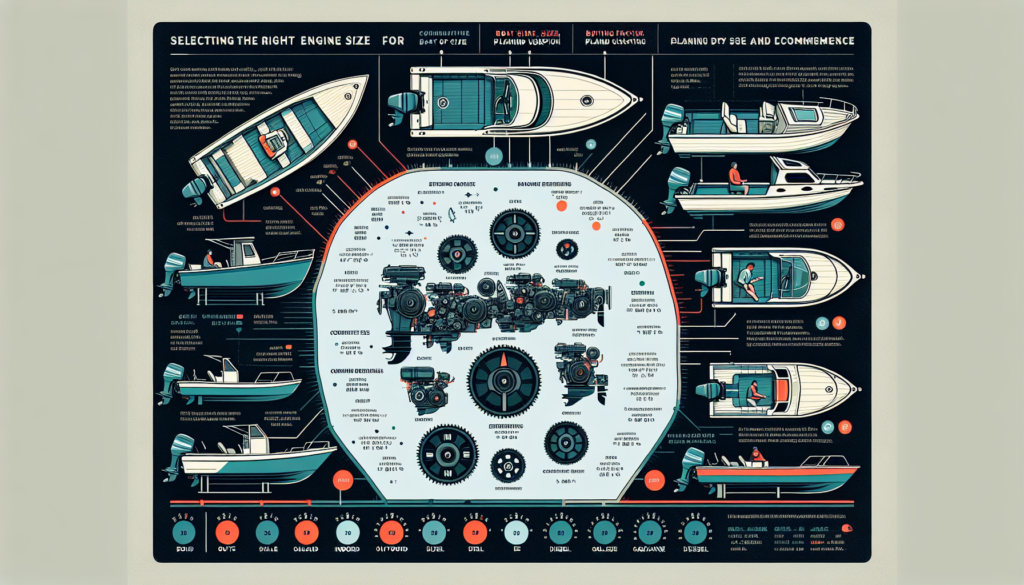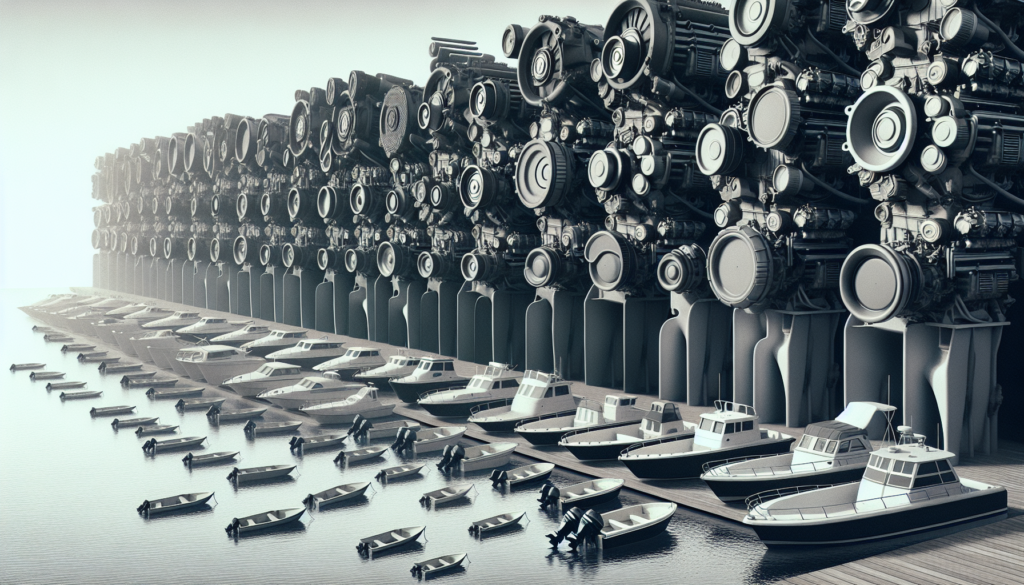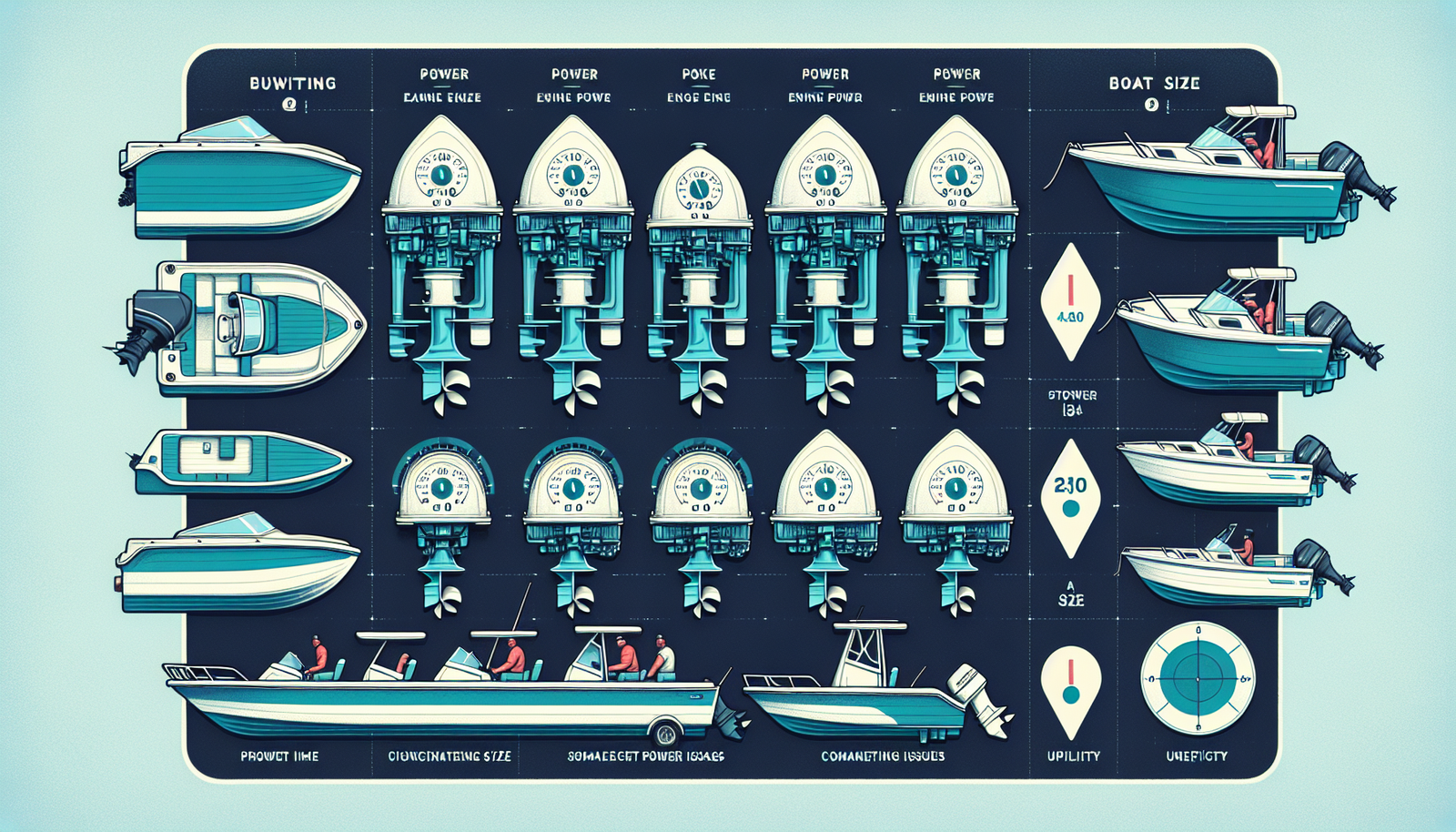If you’re a boat enthusiast or planning to become one, selecting the perfect engine size is an absolute crucial step for an enjoyable time on the water. In the “Guide to Choosing the Right Boat Engine Size”, you will gain insight into the key aspects you need to consider before making that choice. This guide will equip you with the necessary knowledge about engine size, horsepower and the types of marine engines, ensuring your journeys on water sails smooth and efficient. So, let’s set sail on this resourceful guide and find an engine that matches your seafaring lifestyle perfectly.
Understanding Boat Engines
Before you can choose the perfect engine for your boat, it’s important to understand the fundamentals of boat engines and how they work.
Basics of boat engine
Like your car engine, a boat engine is essentially a machine designed to convert one form of energy into mechanical energy. Boat engines burn fuel and air, converting the chemical energy into motion, allowing your boat to move across the water body.
Different types of boat engines
Boat engines come in diverse types with each having its own unique features and specifications. The four most common types are: Outboard engines, Inboard engines, Sterndrive engines, and Jet engines. Each engine type comes with its advantages and disadvantages depending on the boat’s design, purpose, and operating environment.
The function of boat engines
The primary function of a boat engine is to propel the boat forward. However, they also play other critical roles. The engine powers all the electrical systems on your boat, including the lights, navigation systems, and communication devices. In larger boats, engines also provide energy for heating and cooling systems.
Importance of Choosing the Right Boat Engine Size
Choosing the right engine size for your boat can significantly impact the boat’s performance, safety, fuel efficiency, and longevity.
Impact on boat performance
The size of your boat engine directly influences the overall performance of your vessel. A larger engine usually means more power, which leads to greater acceleration and top speed. On the other hand, an engine that’s too large could make your boat difficult to control.
Influence on fuel efficiency
Another crucial factor to consider is fuel efficiency. An engine that is too small for your boat may have to work harder, consuming more fuel and decreasing your boat’s overall efficiency. Conversely, a larger engine can also consume more fuel than necessary if it isn’t being used at its optimal running speed.
Implications on safety and reliability
Lastly, the right engine size can enhance the safety and reliability of your boat. An engine that perfectly fits your boat’s needs will be less likely to fail when you need it most. An undersized engine may break down under strain, whereas an oversized engine may cause problems due to infrequent use at low power.

Calculating Boat Engine Size
The size of a boat engine is typically measured in horsepower, a unit of power.
Understanding horsepower
Horsepower (HP) essentially measures how much work an engine can do over time. For example, one horsepower equates to the power needed to lift 550 pounds one foot in one second.
How to estimate required horsepower
Estimating the right engine horsepower for a boat depends on several factors such as boat weight, hull shape and how the boat will be used. A simple rule of thumb is to get between 25 to 40 pounds of weight per unit of horsepower. Thus, if your boat weighs 4000 pounds, you should aim for an engine between 100 to 160 HP.
Impact of boat weight and hull shape
Additionally, the shape of your boat’s hull and its weight significantly influence the horsepower required. A boat with a flat bottom hull design will require less horsepower to move than a boat with a deep V hull design. Weight-wise, a heavier boat requires greater horsepower to achieve the same speed as a lighter one.
Types of Boat Engines and Their Sizes
Outboard Engines
Outboard engines are mounted to the outside of the boat and provide steering control by pivoting over their mountings.
Inboard Engines
Inboard engines, on the other hand, are fixed inside the boat, usually in the center. They’re typically larger and more powerful and are suitable for boats that require more speed and power.
Sterndrive Engines
Sterndrive engines, or inboard/outboard engines, combine features of both outboard and inboard engines. They’re mounted inside the boat like inboards but have a drive unit hanging off the transom, providing more interior space.
Jet engines
Jet engines work by sucking water into a pump and ejecting it out the back for propulsion. They’re most commonly found on personal watercraft and some high-performance, luxury vessels.

Outboard Engines
Understanding outboard engines
Outboard engines are the most common type of boat engines. They’re reliable, easy to maintain, and known for their versatility. They’re usually located on the back (stern) of the boat, which gives you more interior space.
Best uses for outboard engines
Outboard engines are best used for small to medium-sized boats, such as fishing boats, pontoon boats, and smaller cabin cruisers. They’re perfect for shallow waters as they can be tilted up to avoid hitting the bottom or to reduce drag when not in use.
Engine size considerations for outboard engines
When considering an outboard engine, factors like boat weight, speed, and amount of usage should be taken into account. A general rule of thumb is that recreational boats should have around 25 to 40 pounds of weight per horsepower.
Inboard Engines
Understanding inboard engines
Inboard engines are located inside the boat and are typically built into the bottom of the boat in the middle or towards the back. This provides better balance and stability compared to outboard engines.
Best uses for inboard engines
Inboard engines are more suitable for larger, more powerful boats that require more speed, such as cruisers or speed boats. They also tend to be more durable and can better handle continuous use over longer periods.
Engine size considerations for inboard engines
When it comes to inboard engines, a larger model is typically required compared to outboard engines. This is because inboard engines need to create more torque to achieve the same forward thrust due to the more complicated drive system.

Sterndrive Engines
Understanding sterndrive engines
Sterndrive engines, also known as inboard/outboard engines, offer the best of both inboard and outboard engines. They’re mounted inside the boat, similar to inboard engines, but have an outboard drive unit with a propeller, which can be tilted up like an outboard engine.
Best uses for sterndrive engines
Sterndrive engines are ideal for medium to large-sized boats requiring more power, such as powerboats, sport boats, and larger cuddy boats. They offer better handling and maneuverability compared to inboard engines.
Engine size considerations for sterndrive engines
Just like inboard engines, sterndrive engines generally require a larger engine size. Apart from the boat’s weight, other factors such as boat design and the desired top speed will determine the right engine size.
Jet Engines
Understanding jet engines
Jet engines are different; they eliminate the use of a propeller for propulsion. Instead, water is drawn into the pump through an intake under the boat, which is then forced out under pressure through a nozzle at the boat’s stern to move the boat forward.
Best uses for jet engines
Jet engines are typically used on personal watercraft but are also found on some larger, high-performance vessels. They’re popular for their high acceleration, ability to operate in shallow waters, and increased safety due to the absence of an external propeller.
Engine size considerations for jet engines
With jet engines, a sizable horsepower is usually required to achieve high speeds and better acceleration. Just like the other types of engines, the boat’s weight, intended use, and hull shape influence the ideal engine size.

Factors to Consider When Choosing Boat Engine Size
Boat size and weight
A simple rule of thumb: the heavier and larger your boat is, the more horsepower you need to propel it.
Boat usage
If you plan on using your boat for leisurely cruises at low to moderate speeds, a smaller engine might serve you better. Conversely, if you intend to use your boat for activities such as water-skiing or fast cruising, a more potent engine may be necessary.
Fuel efficiency and maintenance costs
A powerful engine might sound enticing, but keep in mind the associated fuel costs. Larger engines typically consume more fuel, and maintenance costs can also be substantially higher for engines with more horsepower.
Conclusion
Choosing the right boat engine size is crucial
Choosing the right boat engine size is a blend of art and science. It’s a delicate balance between power, fuel efficiency, and performance, and it’s crucial to get it right for the best boating experience.
Taking your time to make the right choice
Remember, this isn’t a decision you need to rush. Take your time, do your research, and consider your specific needs to make the most informed choice.
Consideration of various factors
Boat weight, size, how you intend to use the boat, and even environmental considerations all play a role in determining the ideal boat engine size.
Ultimately, the perfect engine will provide a seamless blend of efficiency, performance, and reliability, making each journey on your boat an enjoyable and exciting adventure.

